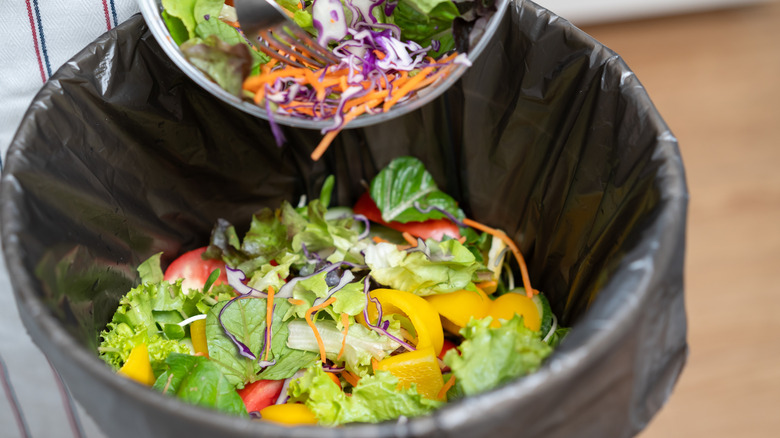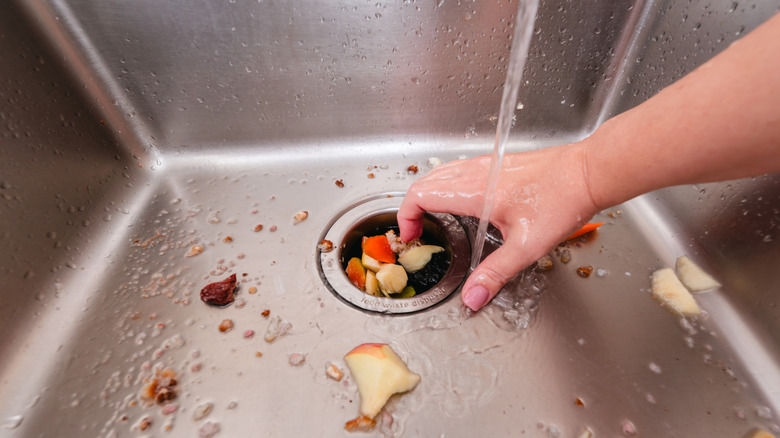The Common American Kitchen Appliance You Rarely See In Other Countries
You know that odd little device beneath your kitchen sink — the one that obliterates leftover food? It's an appliance many Americans take for granted — but outside of the country, a lot of people don't even know it exists. Some might wonder whether it's a miniature blender or maybe a futuristic compost bin.
This gizmo is the garbage disposal — also called a food waste disposer, garburator, or in-sink macerator — which shreds food scraps into tiny bits (around 2 millimeters or smaller) and flushes them into the plumbing system. In 1927, John Hammes invented the garbage disposal in Wisconsin. Hammes patented it in 1935, and his company, InSinkErator, brought the garbage disposal to market in the late 1930s. The garbage disposal really took off post-World War II, during the suburban building boom. There are some things you should never put down the drain, even with a garbage disposal, but their general convenience has kept them popular with Americans. Today, about half of U.S. households have one, with Australia, New Zealand, and the U.K. starting to look in their direction. Still, garbage disposals have not been swept up as a popular method for disposing of food waste in other parts of the world.
Why are they so rare outside the U.S.? There are a few reasons. Many countries have rules or cultural practices that discourage sending food waste down the drain — often to prevent sewage overload, fatbergs (massive globs of congealed fat and waste), and extra strain on treatment plants.
Why garbage disposals are banned (or just unpopular) elsewhere
Nations belonging to the European Union (EU) generally prohibit the use of garbage disposals because local authorities believe that composting food scraps is more cost-effective and sanitary than flushing them away. For instance, Scotland prohibited macerators in non-household premises in areas with available food-waste collection starting in 2016, and Northern Ireland followed suit in April 2017.
Another angle has to do with infrastructure. Older sewer and wastewater systems in many countries simply weren't built to handle the extra organic load. In the U.S., garbage disposals were banned in New York City for decades due to concerns about damaging the sewage system — but after a 21-month study, the ban was lifted in 1997. Other places, like Raleigh, North Carolina, briefly attempted bans but rescinded them after short deliberation. There are environmental and operational debates, too. Some arguments suggest that garbage disposals can raise oxygen demand at treatment plants and contribute to fatbergs — a hardened mixture of fats, oils, and undigested organic matter (and the reason why you shouldn't put oil down the drain). Canada has not embraced garbage disposals for this reason. Vancouver has proposed city-wide restrictions on the use of garbage disposals. The city of Ottawa outlawed them years ago.
On the flip side, places like Philadelphia and Washington, D.C., process flushed food waste into biogas and biosolids, turning scrappy leftovers into renewed energy and fertilizer. Americans may enjoy a splash-and-grind approach to kitchen clean-up, while many other countries opt for other food waste disposal methods, like using separate food-waste bins, composting, or curbside organics programs.

